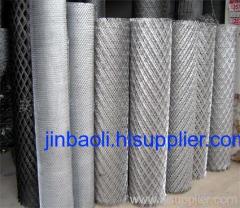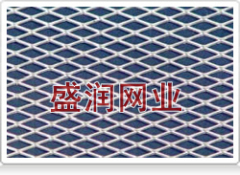
Expanded Plate Mesh
500.0~800.0 USD
| Min. Order: | 2 Ton |
|---|---|
| Trade Term: | FOB |
| Payment Terms: | L/C, T/T |
| Supply Ability: | 300 tons per month |
| Place of Origin: | Hebei |
Company Profile
| Location: | China (Mainland) |
|---|---|
| Business Type: | Manufacturer, Trading Company, Agent, Distributor/Wholesaler, Service, Association |
Product Detail
| Model No.: | Q195 |
|---|---|
| Means of Transport: | Ocean |
| Application: | Others |
| Type: | Welded |
| Material: | Others |
| Brand Name: | BULL |
| Mesh Size: | As shown in the main content |
| wire mesh: | Expanded Metal Mesh |
| Production Capacity: | 300 tons per month |
| Packing: | That depends on the exact quantity |
| Delivery Date: | 20--25 days |
Product Description
Expanded Plate Mesh
General Use

Materials
Expanded Metal can be made from aluminum, carbon steel, stainless steel, nickel, titanium, brass and other metal materials.
Expanded Metal can be made from aluminum, carbon steel, stainless steel, nickel, titanium, brass and other metal materials.
| Specifications | ||||||
| mesh | SWM(mm) | LWM(mm) | strip(mm) | width | length | weight |
| thickness(mm) | (m) | (m) | (kg/m2) | |||
| 0.5 | 2.5 | 4.5 | 0.5 | 0.5 | 1 | 1.8 |
| 0.5 | 10 | 25 | 0.5 | 0.6 | 2 | 0.73 |
| 0.6 | 10 | 25 | 1 | 0.6 | 2 | 1 |
| 0.8 | 10 | 25 | 1 | 0.6 | 2 | 1.25 |
| 1 | 10 | 25 | 1.1 | 0.6 | 2 | 1.77 |
| 1 | 15 | 40 | 1.5 | 2 | 4 | 1.85 |
| 1.2 | 10 | 25 | 1.1 | 2 | 4 | 2.21 |
| 1.2 | 15 | 40 | 1.5 | 2 | 4 | 2.3 |
| 1.5 | 15 | 40 | 1.5 | 1.8 | 4 | 2.77 |
| 1.5 | 23 | 60 | 2.6 | 2 | 3.6 | 2.77 |
| 2 | 18 | 50 | 2.1 | 2 | 4 | 3.69 |
Patterns
Expanded Metal can be processed in different opening shapes, typically as: standard rhombic shape; heavy type Tortoise-shaped expanded metal, also known as hexagonal shape; flattened; and some Special shapes or designs.

Expanded Metal can be processed in different opening shapes, typically as: standard rhombic shape; heavy type Tortoise-shaped expanded metal, also known as hexagonal shape; flattened; and some Special shapes or designs.

General Use
Expanded Metal products are extensively used in a wide variety of industries and daily life, as gratings, laths, screens, fences, filtration media and building decoration materials.







.jpg)

.jpg)